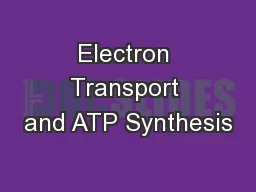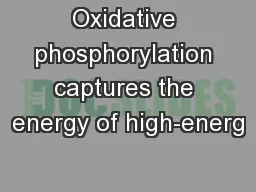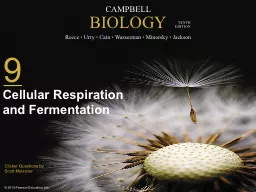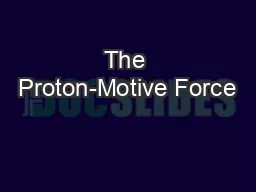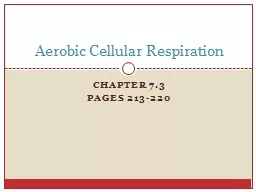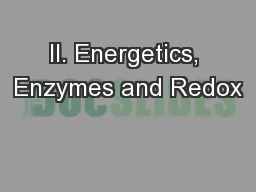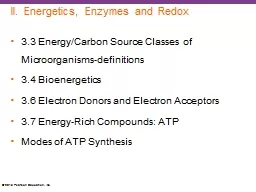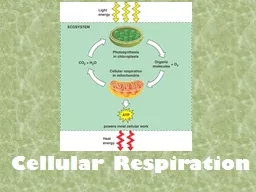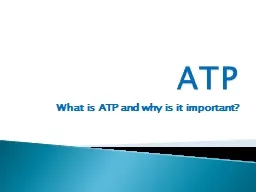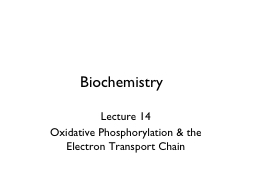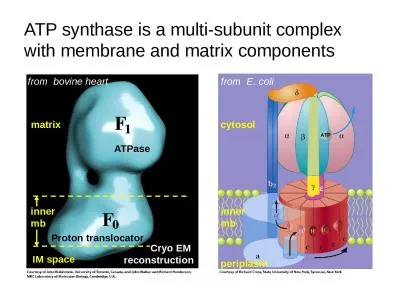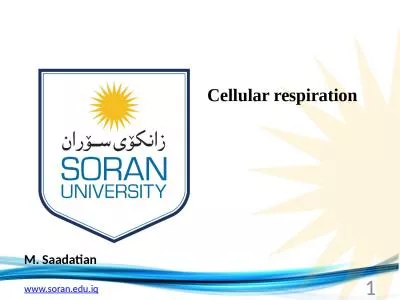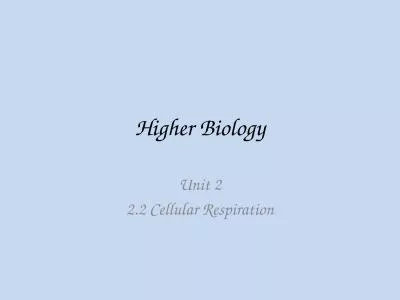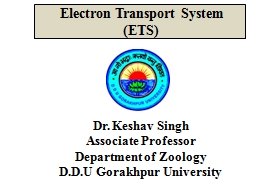PPT-Electron Transport and ATP Synthesis
Author : lois-ondreau | Published Date : 2017-06-02
C483 Spring 2013 1 To reduce one molecule of O2 electrons must be passed through the electron transport chain and molecules of NADH isare oxidized A 4 2 B 2 1
Presentation Embed Code
Download Presentation
Download Presentation The PPT/PDF document "Electron Transport and ATP Synthesis" is the property of its rightful owner. Permission is granted to download and print the materials on this website for personal, non-commercial use only, and to display it on your personal computer provided you do not modify the materials and that you retain all copyright notices contained in the materials. By downloading content from our website, you accept the terms of this agreement.
Electron Transport and ATP Synthesis: Transcript
Download Rules Of Document
"Electron Transport and ATP Synthesis"The content belongs to its owner. You may download and print it for personal use, without modification, and keep all copyright notices. By downloading, you agree to these terms.
Related Documents

